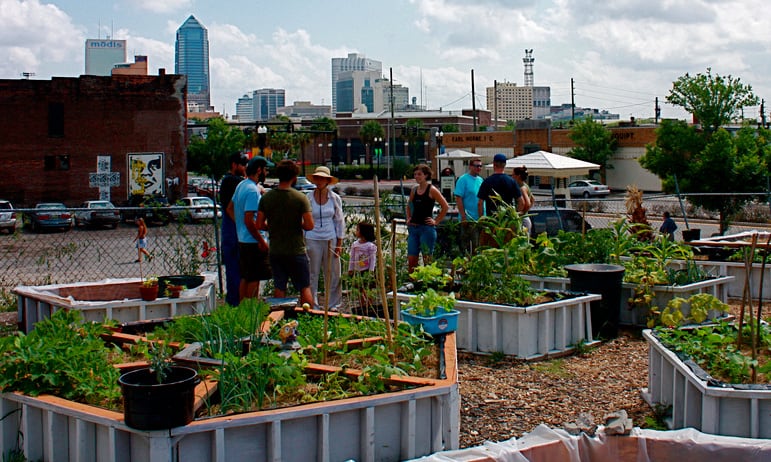How City Blooming can Save You Time, Stress, and Money.
How City Blooming can Save You Time, Stress, and Money.
Blog Article
Not known Factual Statements About City Blooming
Table of ContentsThe Single Strategy To Use For City BloomingGetting My City Blooming To WorkThe Basic Principles Of City Blooming Some Known Factual Statements About City Blooming All about City Blooming
Intrigued in growing food to buy in the City of Chicago? Thinking of beginning a community yard? Modifications to the Chicago Zoning Regulation permit farming usages like area yards and urban ranches in lots of parts of the city. Below is a list of frequently asked concerns relating to the guidelines and regulations that farmers must take into consideration when preparing an urban agriculture task.
The zoning amendment does not change any various other codes handling composting, structure licenses, acquiring or leasing City possessed residential property, business licenses or ecological contamination. There are existing codes that manage these problems and they continue to be completely result and might apply to your project. Neighborhood yards are commonly had or managed by public entities, public companies or community-based companies and maintained by volunteers.
Urban farms grow food that is planned to be offered, either on a not-for-profit or for-profit basis. Due to their industrial function, city ranches require an organization license. Yes. A neighborhood garden is allowed to sell surplus create that was expanded on site if the sales are accessory or secondary to the yard's key purpose described above.
Not known Factual Statements About City Blooming
The amount of compost material can not go beyond 25 cubic lawns at any offered time according to the criteria in 7-28-715 of the City's Municipal Code. Since the dirt at a lot of new garden sites requires amending, garden compost, soil, timber chips, or other products can be obtained to create or improve the expanding area.

If a building permit is needed after that the hoophouse will be taken into consideration an accessory structure. You can learn even more regarding the building permit needs by contacting the Division of Buildings. The 25,000-square-foot size limit is intended to avoid a single area yard from controling an offered block or diminishing the block's existing property or commercial character.
The limit does not put on yards situated in Public Open Area (POS) districts. Can there be more than one neighborhood yard that is 25,000 square feet on a single block? Yes. The dimension limit puts on individual gardens, not to specific blocks. No. Fencing is not needed, nevertheless, yards that have big parking lot may be needed to mount secure fencing or various other landscape design attributes.
Not known Details About City Blooming
B1 & B2 areas require that all commercial usage activities be conducted indoors. Is secure fencing needed for metropolitan farms? Fencings might be needed, along with landscape design and testing, for certain vehicle parking locations and outside work or storage areas depending on location and the specific task taking area.
Urban farms require building authorizations and zoning authorizations prior to building (eco-friendly practices). Other types of city review may be needed depending on details structures, tasks, size, landscape design, licensing, public heath and stormwater monitoring problems.
The Division of Business Affairs and Consumer Defense can help determine the specific kind of company certificate that's called for. Off street parking is required for the majority of industrial tasks in Chicago. The required number of vehicle parking rooms is based on the number of employees functioning on site and not the square footage of the growing area.
Some Known Incorrect Statements About City Blooming

A city ranch can market garden compost product produced on website, nevertheless, the operation needs to abide with the regulations in 7-28-715 of the Chicago Municipal Code. Aquaponic systems are allowed inside on urban ranches in several zoning districts.
Approximately five hives or nests of honey bees may be kept as an accessory use. However, beekeepers should register with the Illinois Division of Farming. For more details about the proposed zoning change you may call the Department of Real Estate and Economic Development, Bureau of Preparation and Zoning at 312.744.8563.
, which takes area in rural locations at the side of residential areas.
Facts About City Blooming Uncovered
It can involve an activity of natural cultivators, "foodies" and "locavores", that look for to form social networks based on a shared ethos of nature and area holism. These networks can establish using formal institutional assistance, coming to be incorporated into regional town preparation as a "transition community" motion for lasting urban advancement.
Some of go to my blog the first evidence of city farming comes from Mesopotamia.
Report this page